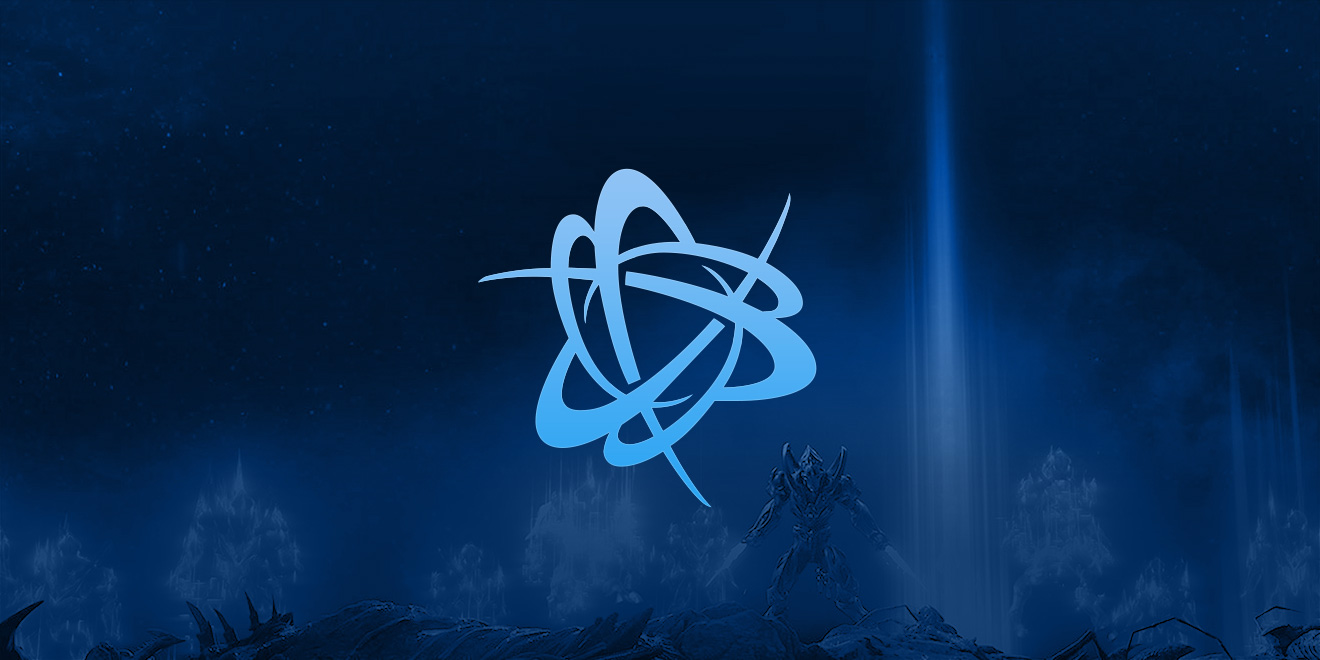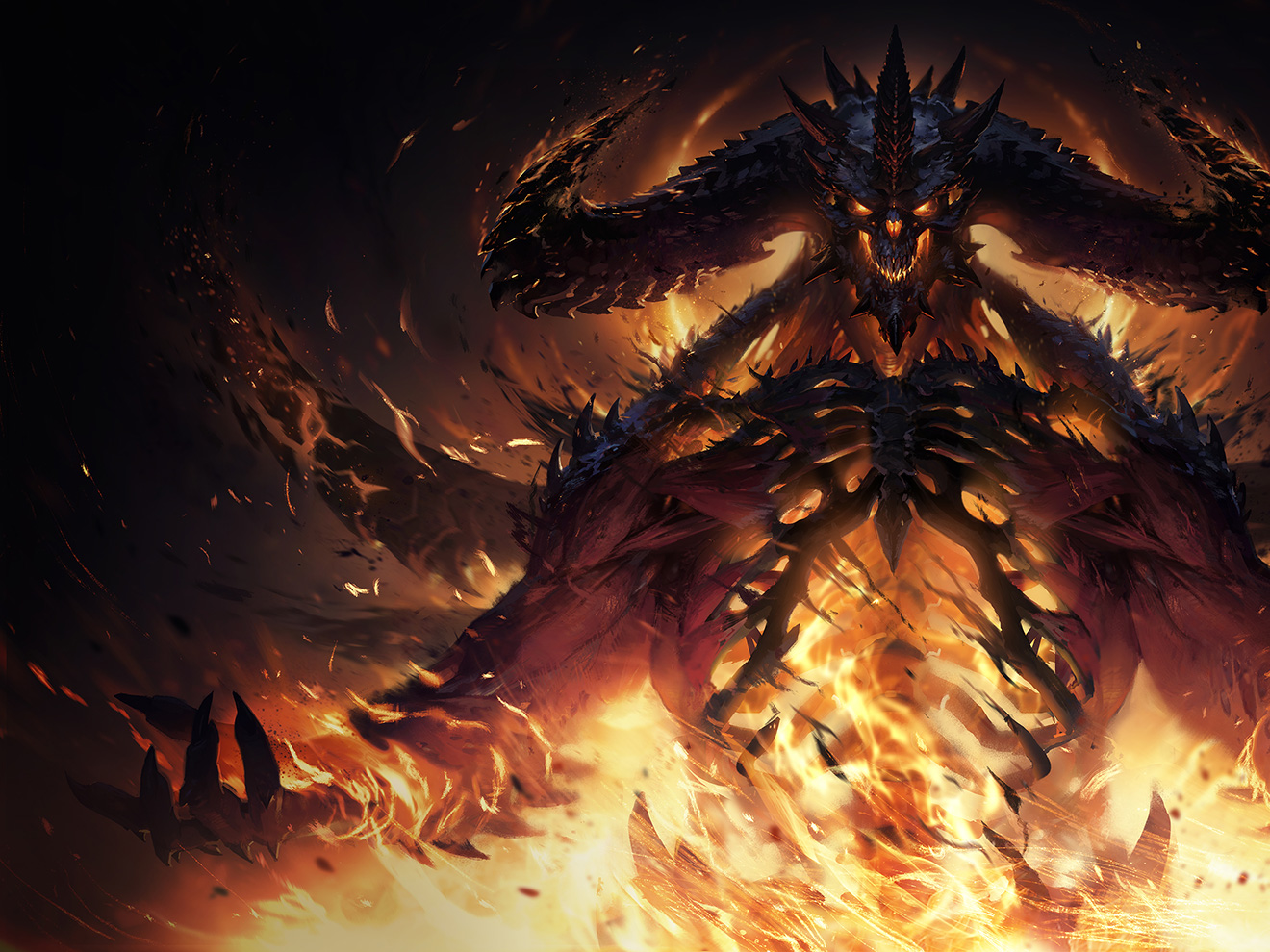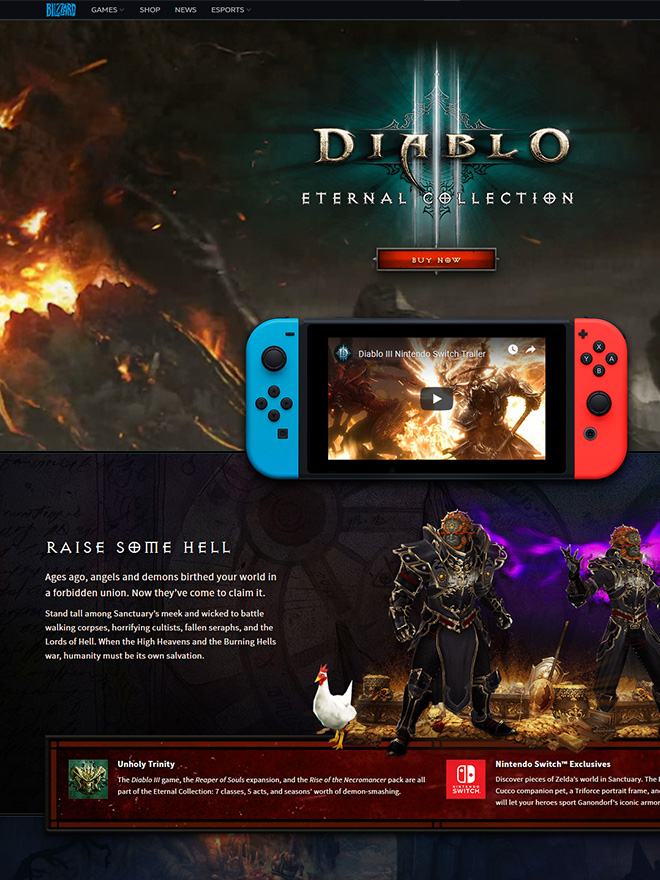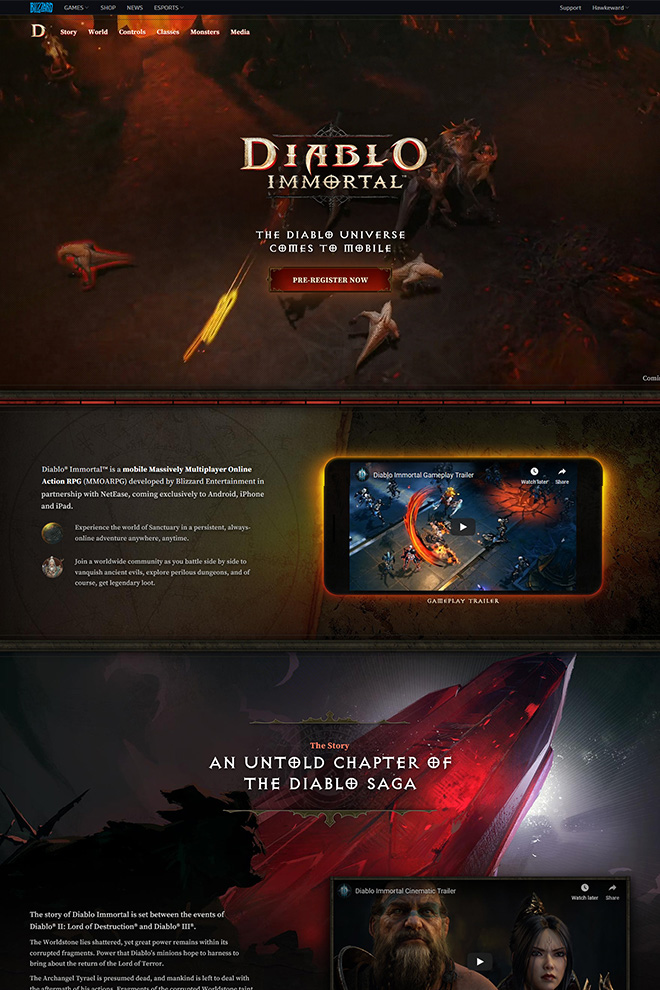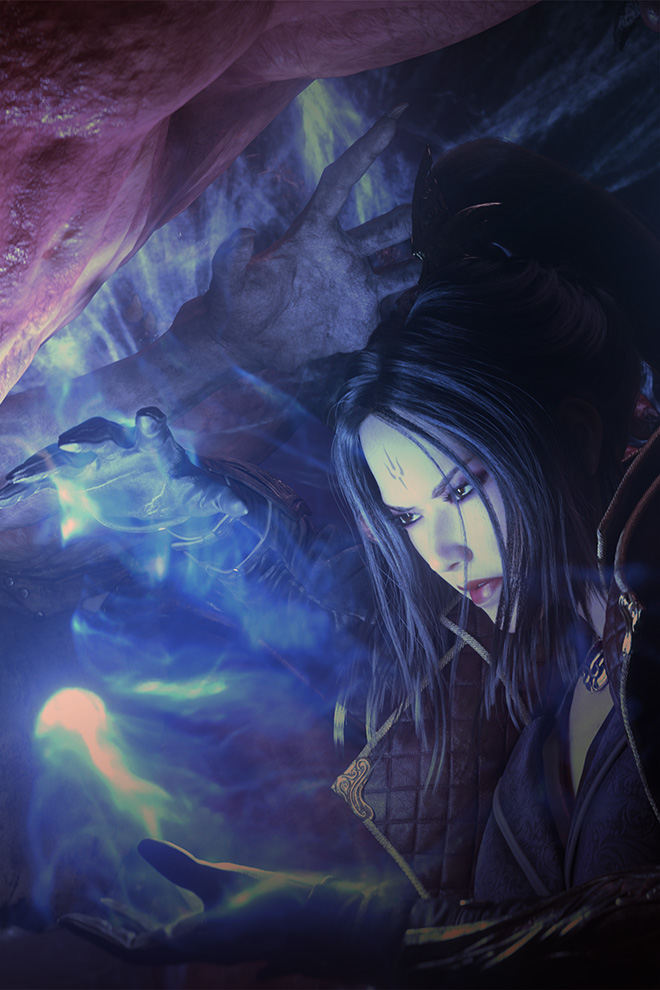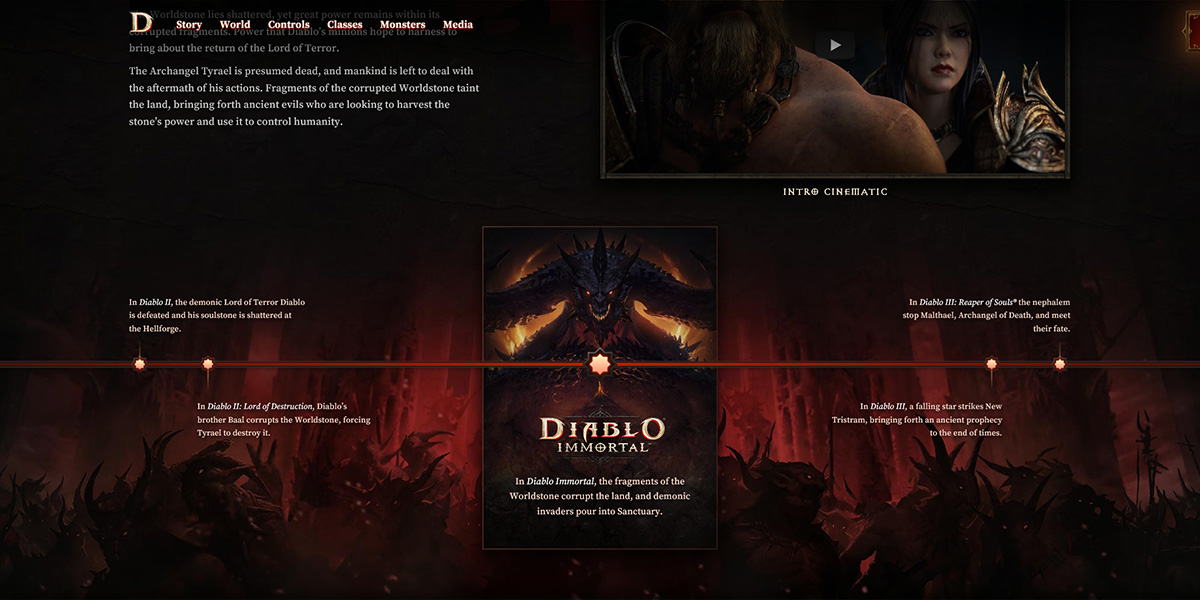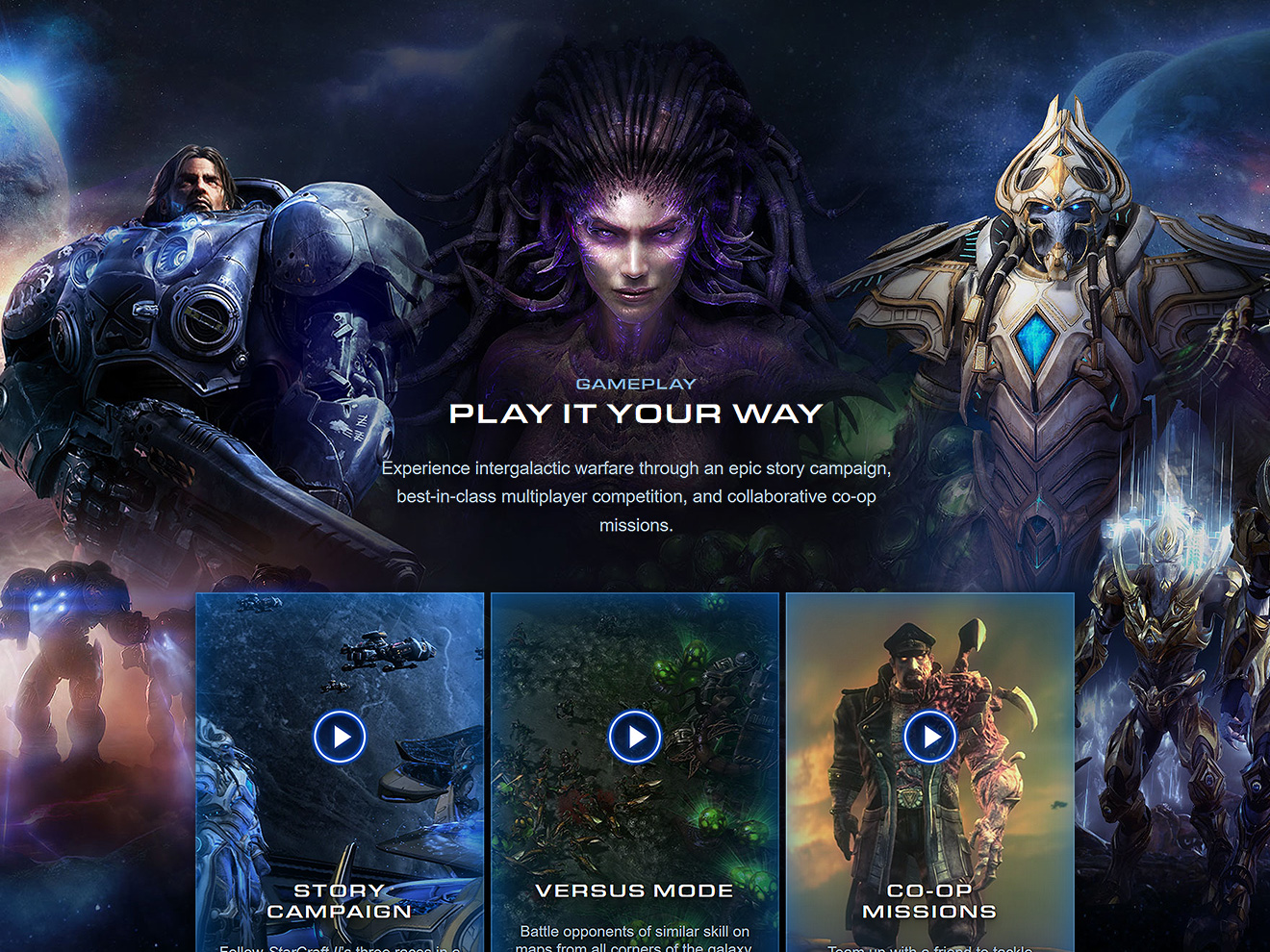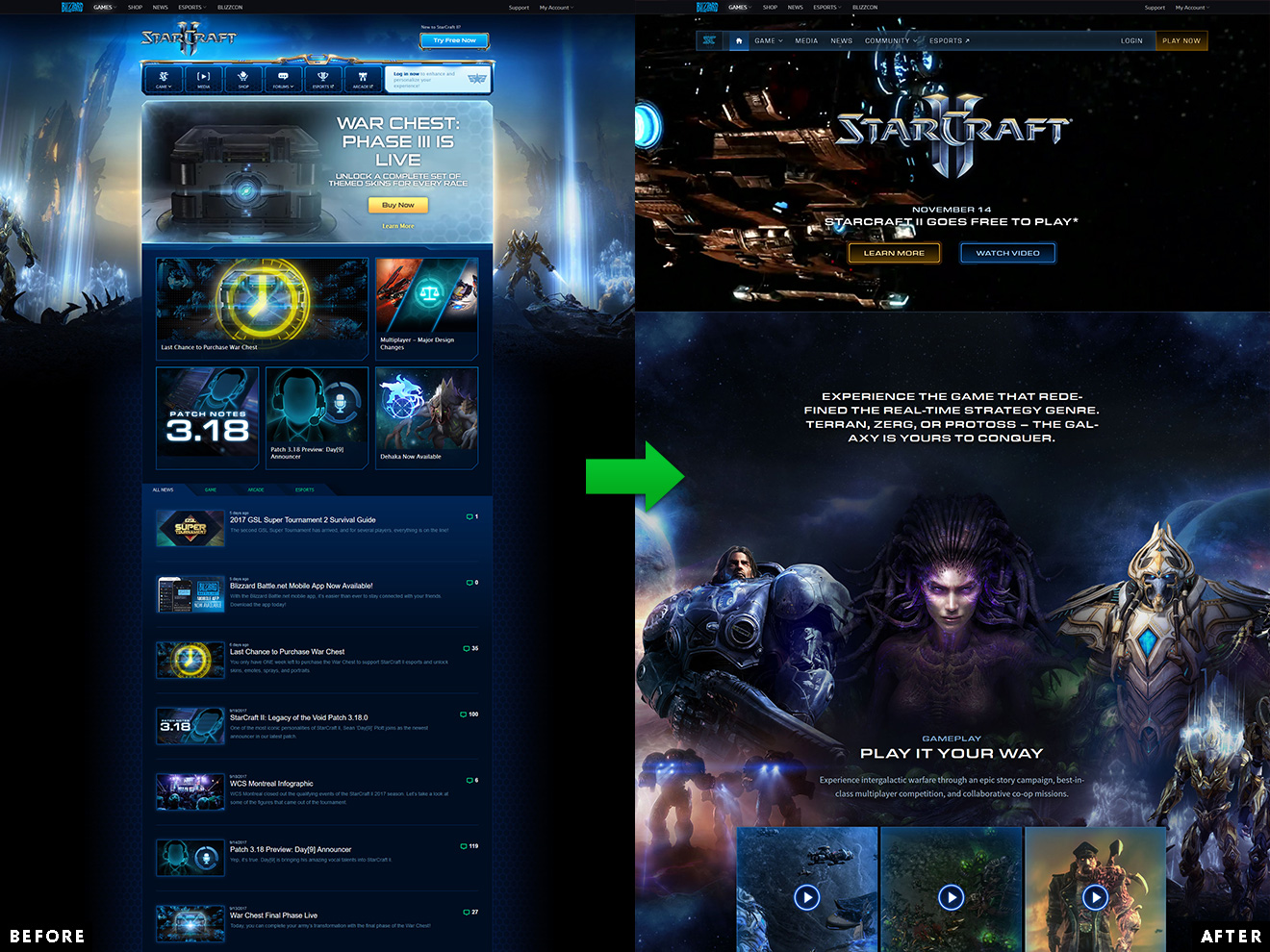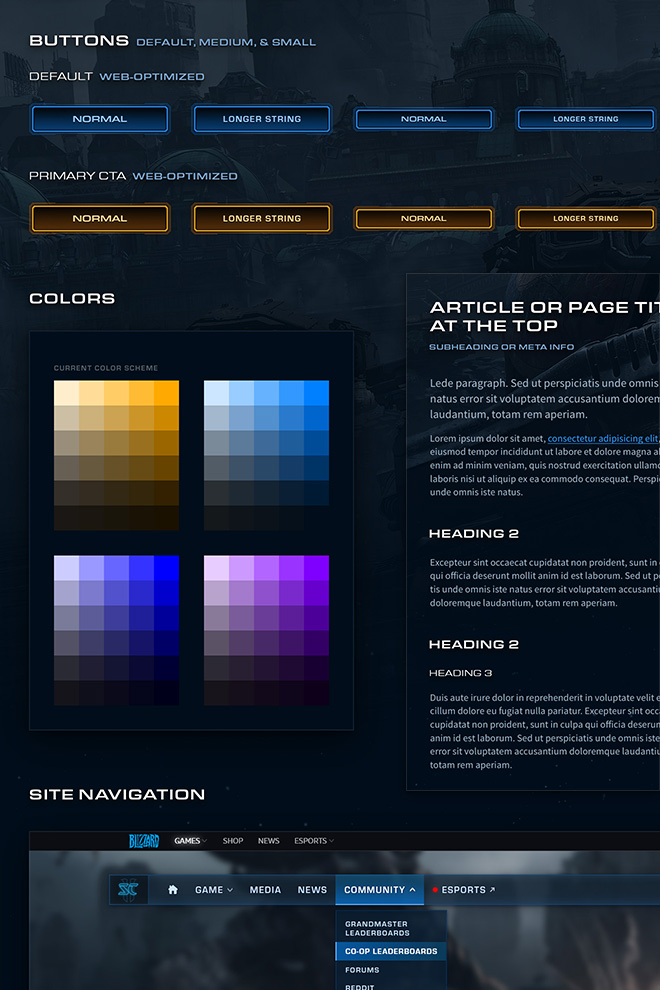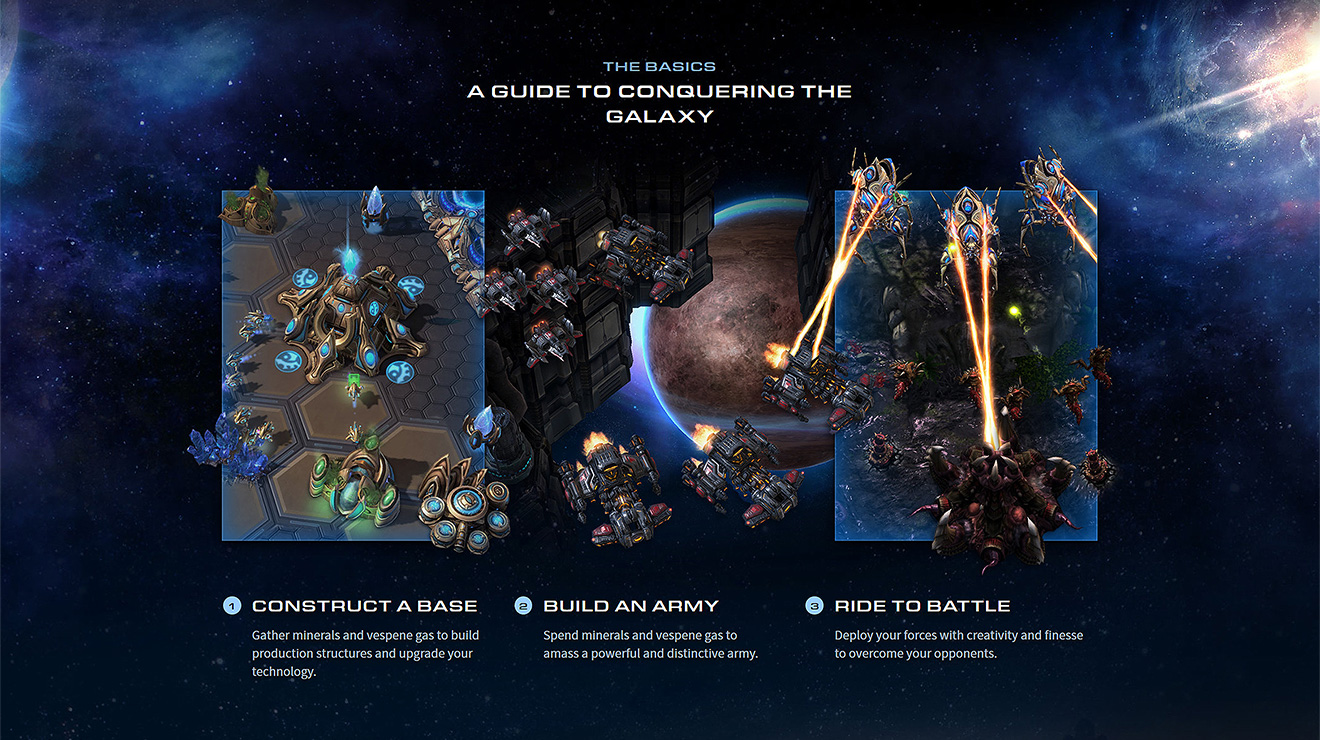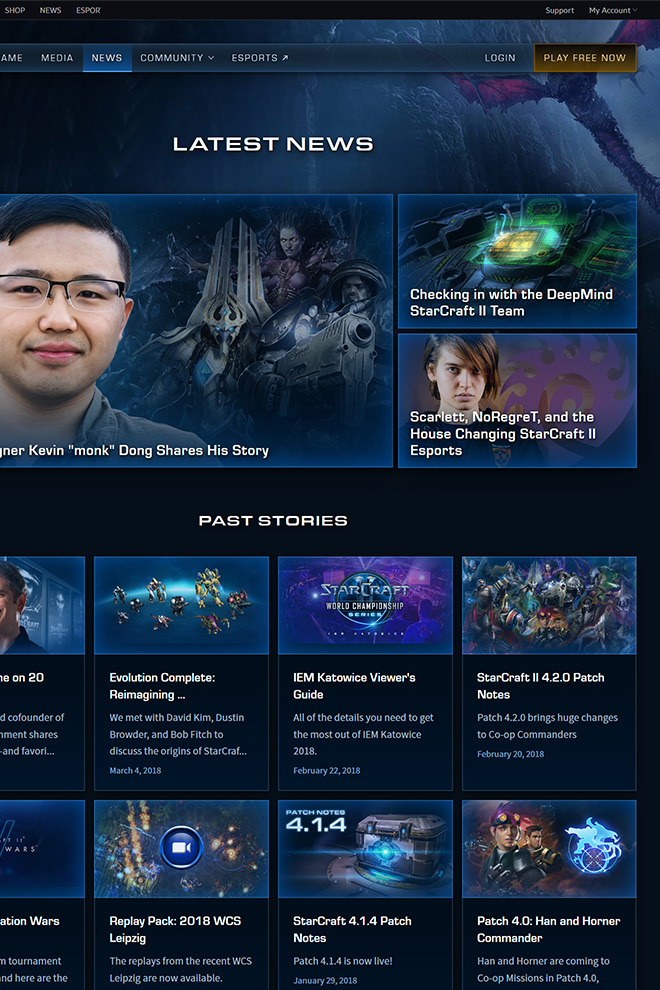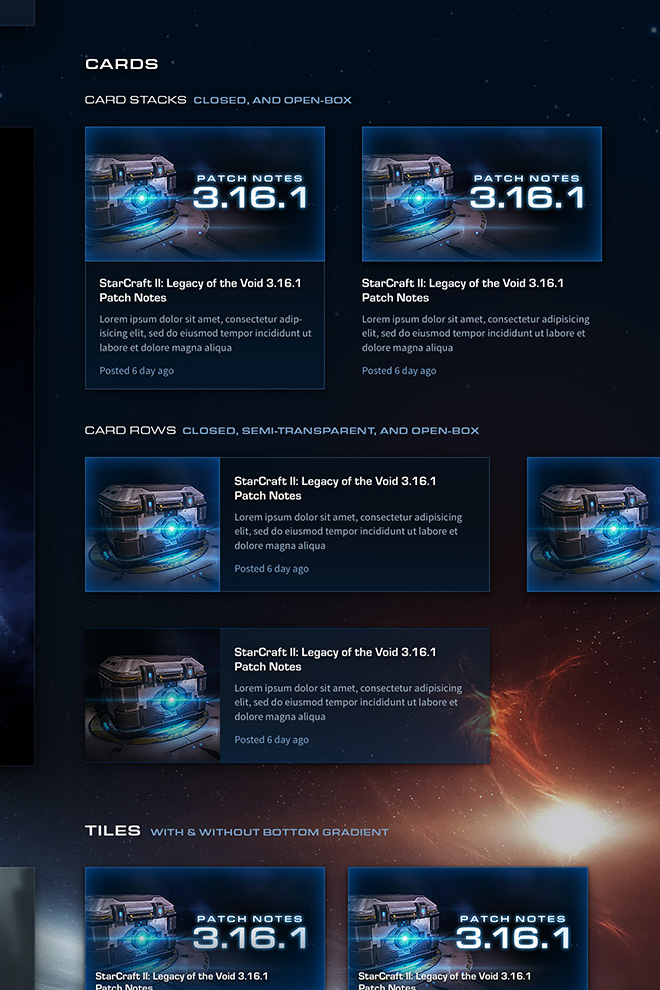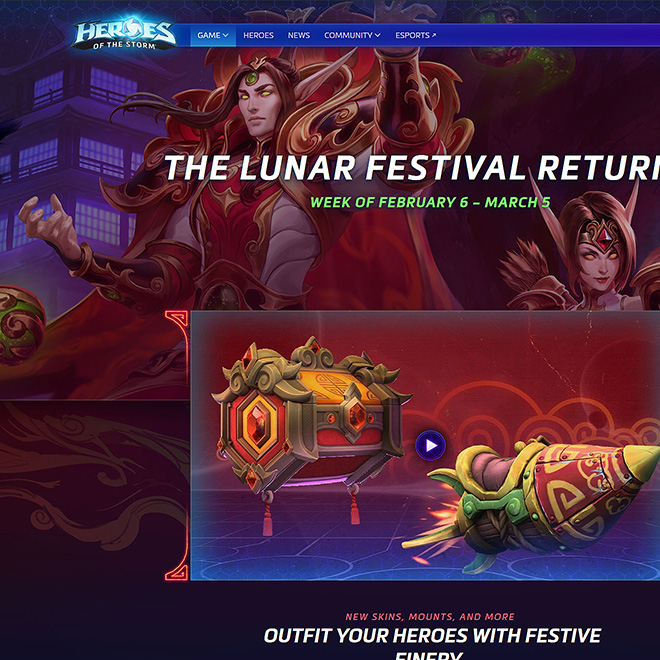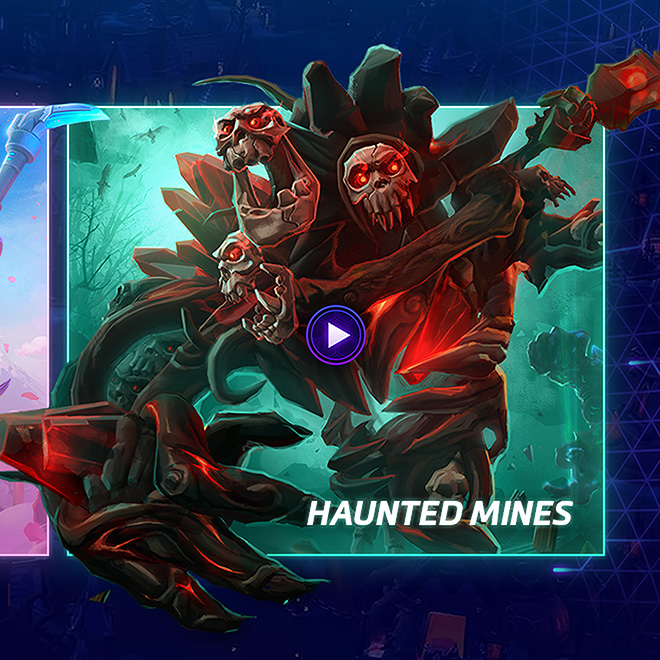Blizzard Battle.net Leading Platform Design Teams
Battle.net is Blizzard’s online gaming service, combining multiplayer connectivity, purchases, account management, social features, and more into a single package.
Previously, I led several teams within “Battle.net & Online Products,” including a group tasked with making tools and tech decisions for Blizzard’s web properties. Most of this work is still behind an NDA.
Some early adopters of our tech are shown below, including Diablo Immortal (also below), Warcraft III Reforged, and World of Warcraft Classic.
